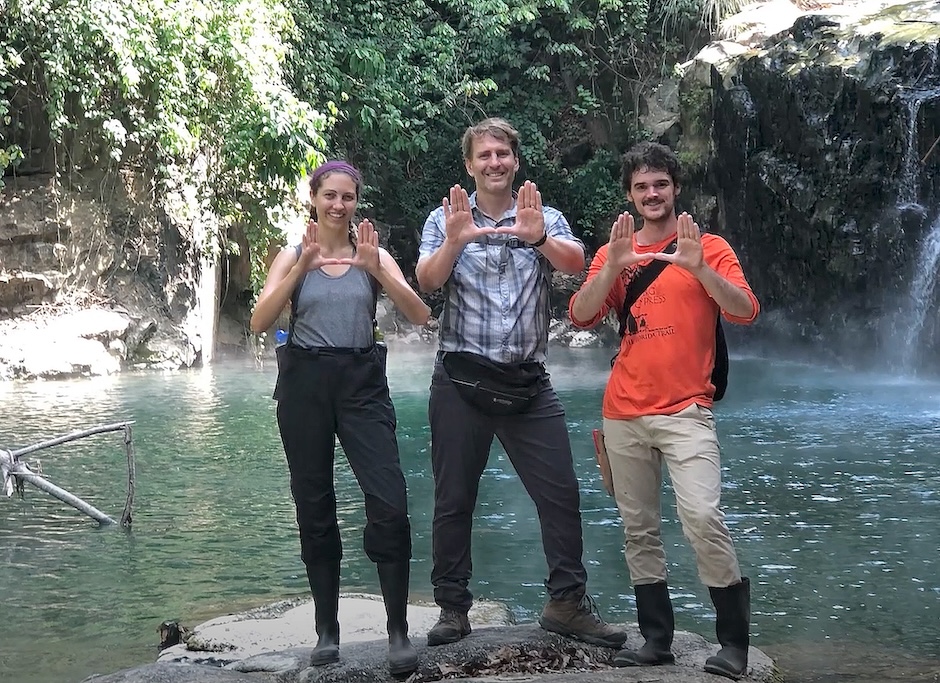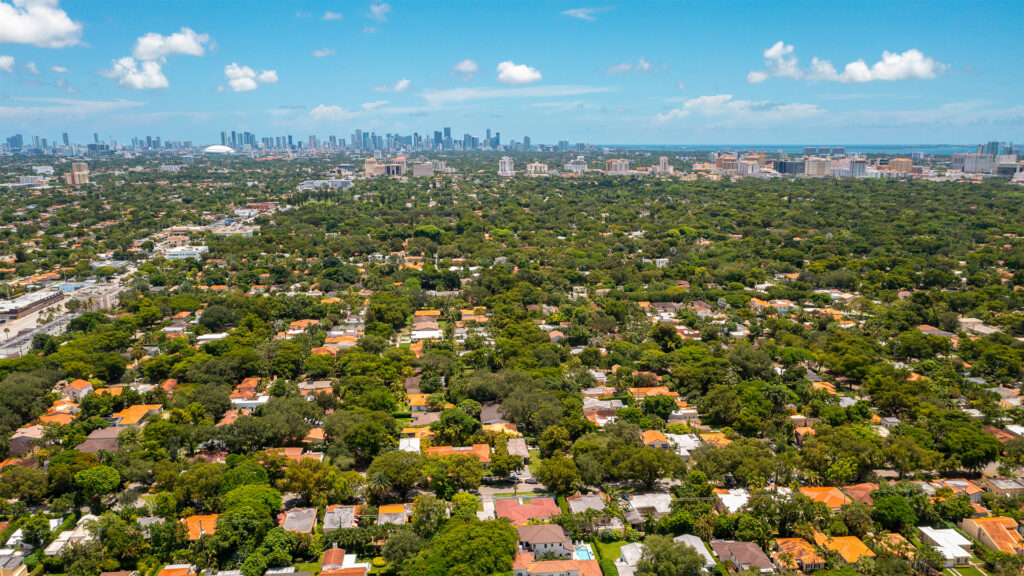By Janette Neuwahl Tannen, University of Miami News
In Miami — a place known for one of the most diverse tree canopies in the world — nearly half of the native trees may struggle to survive in the coming decades, a new University of Miami study indicates.
Due to global warming, temperatures may simply become too hot for some of the types of trees that dominate the city’s current landscape, like live oaks, slash pines and cabbage palms.
But the research also found that strategically planting more tropical trees may help the local canopy stay resilient in the face of climate change.
Through an extensive data analysis project, a team of ecologists in the Department of Biology in the College of Arts and Sciences discovered that up to 41% of the tree species planted throughout Miami-Dade County’s urban core will likely experience heat stress by 2100 as temperatures climb beyond the species’ heat tolerances. This means that many of South Florida’s native trees will be more susceptible to disease and death. Yet, the team also found that many of the exotic tree species from the Caribbean and the tropics could thrive in a warmer Miami.

“Between 16% and 41% of tree species currently planted in Miami will eventually be living in temperatures that are beyond what we know they can survive in,” said Alyssa Kullberg, a doctoral graduate in biology who is the lead author on the paper published in Urban Forestry and Urban Greening. “Now that we have this information, we can think about the tree species we should be planting into the future.”
Over the past year, Kullberg worked with biology professor Kenneth Feeley, along with other graduate students in his Jungle Biology Lab, to create a list of the 249 most common tree species found in the urban Miami core, and then calculated their “thermal safety margin,” or how much heat they can tolerate.
From that data, they determined that many of the region’s native shade trees, like oaks, slash pine, bald cypress and red maple, may not be able to endure the high temperatures that South Florida will likely experience over the coming decades. Therefore, planting trees native to the tropics that are capable of tolerating hotter temperatures will be a better long-term option, Feeley said.
“We can’t keep planting for the conditions we have today,” added Feeley, Smathers Chair of Tropical Tree Biology and director of the University’s John C. Gifford Arboretum, in a recent presentation to the Dade Chapter of the Florida Native Plant Society.
Toward that goal, the study offers specific suggestions based on their research. While there are many exotic palms that can thrive in hot temperatures, Kullberg and Feeley recognize that planting palms may not offer sufficient shade to counteract the heat island effect present in large urban areas like Miami.
The team also factored in other stressors like changes in wind, droughts and saltwater incursions that Miami will likely encounter in the future. This led them to suggest planting trees that are native to Miami but that also occur throughout the Caribbean, and that also offer shade, such as black olive, West Indian mahogany, gumbo-limbo and sea grape trees.

“As temperatures rise, it will have a disproportionate impact on our native temperate species, whereas tropical and exotic species will be more comfortable,” Feeley added. “We can think of Miami as being part of the Caribbean and plant trees that come from the greater Caribbean.”
Kullberg and Feeley have spent time working with stakeholders, like Silvi, a reforestation nonprofit with interest in South Florida, and have spoken to various botanical organizations. Kullberg also met with Miami-Dade County chief heat officer Jane Gilbert, who was interested in their suggestions for the county’s tree planting initiative.
“One of the great outcomes of this work was that we got involved with all of these local stakeholders who are interested in improving the health of Miami’s urban tree communities,” said Kullberg, now a postdoctoral researcher at the Swiss Federal Institute of Technology Lausanne.
The team also created a research method that can be used by others to identify the best tree species for localities across the world in the coming years. Kullberg said that she hopes this work will spur other cities to be proactive about planting more resilient trees.
“Urban heat is a really major public health concern. So given that, we wanted to shed light on the need for forward-thinking plantings to help take care of urban tree communities and ensure that they are providing the services and benefits that we need, like mitigating the heat island effect while also absorbing carbon dioxide and offsetting greenhouse gas emissions,” she said.
This piece was originally published at https://news.miami.edu/stories/2024/10/the-trees-of-miamis-future.html.
Sign up for The Invading Sea newsletter by visiting here. If you are interested in submitting an opinion piece to The Invading Sea, email Editor Nathan Crabbe at nc*****@*au.edu. To learn more about the urban heat island effect, watch the video below.



